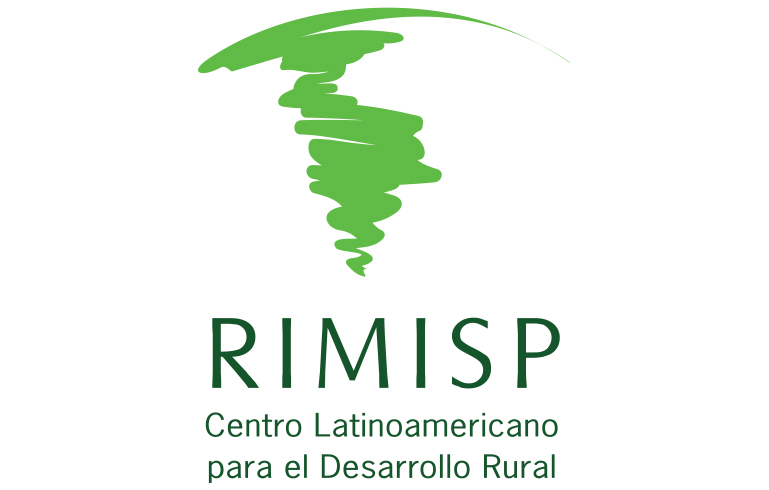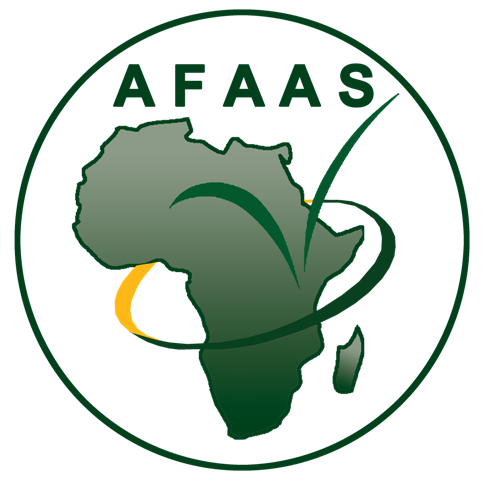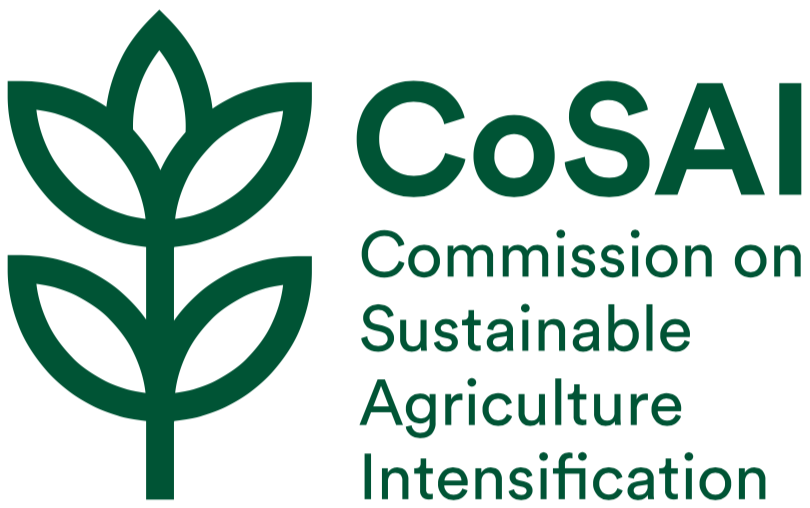Résultats de la recherche
Displaying 1 - 10 of 689 results.
Extension, Poverty and Vulnerability: The Scope for Policy Reform - Final Report of a Study for the Neuchâtel Initiative
This report is concerned with the ‘who?’ ‘what?’ and ‘how?’ of pro-poor extension. It builds on the analytical framework proposed in the Inception Report of the same study (Christoplos, Farrington and Kidd, 2001), taking it forward by fleshing out the analysis with empirical information gathered from several countries during the course of the study (from primary data in Bolivia, Colombia, Nicaragua, Uganda and Vietnam, and from secondary sources in a range of other countries, including India), and drawing conclusions on the scope for action by governments and donors in a range of contexts.
Sujet(s):
renforcement des capacités (RC)vulgarisationsystèmes d'innovationinnovationpolitiques d'innovationpolitiquesPolitiques de vulgarisationdéveloppement rural...
Année de publication:
2002The Fallacy of Universal Solutions in Extension: Is Atma the New T&V?
The universal application of the T&V model of agricultural extension in more than 50 countries is one of agricultural development’s best known failures. The approach worked well in places where it was originally developed, but proved inappropriate almost everywhere else. In this report Rasheed Sulaiman V. and Andy Hall worry that an apparently successful extension innovation piloted in India is set to suffer a similar fate.
Sujet(s):
renforcement des capacités (RC)vulgarisationsystèmes d'innovationinnovationPolitiques de vulgarisation...
Année de publication:
2008Programa Piloto Territorios Productivos – Guía de Campo 3. Organización con la comunidad
El Programa Piloto Territorios Productivos (PPTP) es una iniciativa del gobierno federal que lleva a cabo PROSPERA, y está orientada a generar experiencias y aprendizajes sobre cómo implementar la estrategia de inclusión productiva que forma parte de la política social de nueva generación.
Sujet(s):
Service de vulgarisationSystèmes d'extensionprocessus multipartitesapproches participativespolitiquesPolitiques de vulgarisationengagement du secteur public...
Année de publication:
2016Política de Agricultura Familiar Campesina, Indígena y Afrodescendiente 2018 – 2030
La Política de Agricultura Familiar campesina, indígena y afrodescendiente PAFCIA descrita en este documento, es un instrumento estratégico, con visión de futuro para la toma de decisiones y para dar marco a los procesos de dialogo e incidencia política y técnica, así como para desarrollar y consolidar un modelo productivo diversificado, incluyente y territorializado. La PAFCIA se propone durante el período 2018 - 2030, transitar hacia ese modelo y fortalecer las organizaciones de la agricultura familiar a escala nacional y regional.
Sujet(s):
politiques d'innovationpolitiquesPolitiques de vulgarisationPolitiques de rechercheagriculture durablesecteur agroalimentairePetits agriculteurs...
Année de publication:
2017Agricultural extension reforms: lessons from India
This chapter examines the current state of agricultural extension reforms and their linkages to the agricultural research system reforms in India and identifies the policy options and strategic priorities for making it relevant, responsive, and efficient. It explores how the National Agriculture Research Systems (NARS) responded with its own set of reforms that were sought to increase its relevance and its linkages to the extension system reforms.
Sujet(s):
Année de publication:
2019Agricultural Extension Reforms in South Asia: Status, Challenges, and Policy Options
Agricultural Extension Reforms in South Asia: Status, Challenges, and Policy Options is based on agricultural extension reforms across five South Asian countries, reflecting past experiences, case studies and experiments. Beginning with an overview of historical trends and recent developments, the book then delves into country-wise reform trajectories and presents several cases testing the effectiveness of different types (public and private) and forms (nutrition extension, livestock extension) of extension systems.
Sujet(s):
Service de vulgarisationrenforcement des capacités (RC)vulgarisationpolitiquesPolitiques de vulgarisationengagement du secteur privéengagement du secteur public...
Année de publication:
2019Scoping Study of Gender-responsive Agricultural Services for Rural Poverty Reduction in Africa
This report synthesizes findings from seven country scoping studies on gender-responsive approaches to rural advisory services (RAS) in Africa. The studies, which were conducted in (Benin, Ethiopia, Ghana, Malawi, Nigeria, Sudan, and Uganda), were meant to identify existing policies, programmes, approaches, and tools into which gender considerations had been injected, and then to provide them as RAS to farmers, with specific focus on women and youth
Sujet(s):
Service de vulgarisationrenforcement des capacités (RC)Outils au sujet de RCÉgalité entre les sexesPolitiques de vulgarisation...
Année de publication:
2015Emerging approaches for responding to climate change in African agricultural advisory services: Challenges, opportunities and recommendations for an AFAAS climate change response strategy
This report, drawing on a rapid desk-based review, seeks to outline the potential role of Afican Advisory Services (AAS) in addressing climate change and explores how far AAS in sub-Saharan Africa (SSA) are able to respond to climatic and other pressures. Recommendations are outlined, indicating how AFAAS can help AAS to understand climate change better and become more ‘adaptive’ in their responses
Sujet(s):
Service de vulgarisationrenforcement des capacités (RC)changement climatiquePolitiques de vulgarisationengagement du secteur privé...
Année de publication:
2011Improving Agricultural Extension with Digital data
This policy brief shows how digital tools can help to ensure that public money for agricul-tural extension is spent wisely. Governments often fund offices, training centers, and the salaries of extension officers, but cannot eas-ily review the impacts of these expenditures. This is because the activities of extension agents are not monitored systematically. Ex-ension services rarely generate quantitative data on the effects of their work.
Sujet(s):
vulgarisationTIC (Technologies de l'information et de la communication)apprentissage institutionnelpolitiquesPolitiques de vulgarisation...
Année de publication:
2019The role of extension and financial services in boosting the effect of innovation investments for reducing poverty and hunger: A DEA approach
Increasing investment and spending in agricultural innovation is not enough to meet Sustainable Development Goal (SDG) targets of ending poverty and hunger because the effectiveness of investments in low- and middle-income (LMI) countries is affected by the low quality of infrastructure and services provided, and by different norms and practices that create a considerable gap between financing known technical solutions and achieving the outcomes called for in the SDGs.
Sujet(s):
Année de publication:
2021Pages
Sorting block
Filtrer par idiome
Filtrer par sujet(s)
- (-) Remove policies filter policiespolicies
- politiques (95) Apply politiques filter politiques
- politiques (37) Apply politiques filter politiques
- politiques (33) Apply politiques filter politiques
- politiques (442) Apply politiques filter politiques
- politiques (116) Apply politiques filter politiques
- politiques (69) Apply politiques filter politiques
- politiques (25) Apply politiques filter politiques
- politiques (105) Apply politiques filter politiques
- politiques (142) Apply politiques filter politiques
- politiques (58) Apply politiques filter politiques
- politiques (111) Apply politiques filter politiques
- politiques (151) Apply politiques filter politiques
- politiques (77) Apply politiques filter politiques
- politiques (49) Apply politiques filter politiques
- politiques (515) Apply politiques filter politiques
- politiques (161) Apply politiques filter politiques
- politiques (150) Apply politiques filter politiques
- politiques (95) Apply politiques filter politiques
- politiques (180) Apply politiques filter politiques
- politiques (63) Apply politiques filter politiques
- politiques (32) Apply politiques filter politiques
- politiques (175) Apply politiques filter politiques
- politiques (133) Apply politiques filter politiques
- politiques (167) Apply politiques filter politiques
- politiques (185) Apply politiques filter politiques
- politiques (291) Apply politiques filter politiques
- politiques (148) Apply politiques filter politiques
- politiques (135) Apply politiques filter politiques
- politiques (286) Apply politiques filter politiques
Filtrer par auteur(s)
- politiques (5) Apply politiques filter politiques
- politiques (4) Apply politiques filter politiques
- politiques (3) Apply politiques filter politiques
- politiques (5) Apply politiques filter politiques
- politiques (5) Apply politiques filter politiques
- politiques (3) Apply politiques filter politiques
- politiques (2) Apply politiques filter politiques
- politiques (2) Apply politiques filter politiques
- politiques (3) Apply politiques filter politiques
- politiques (8) Apply politiques filter politiques
- politiques (2) Apply politiques filter politiques
- politiques (4) Apply politiques filter politiques
- politiques (3) Apply politiques filter politiques
- politiques (3) Apply politiques filter politiques
- politiques (3) Apply politiques filter politiques
- politiques (3) Apply politiques filter politiques
- politiques (41) Apply politiques filter politiques
- politiques (15) Apply politiques filter politiques
- politiques (3) Apply politiques filter politiques
- politiques (3) Apply politiques filter politiques
- politiques (9) Apply politiques filter politiques
- politiques (3) Apply politiques filter politiques
- politiques (5) Apply politiques filter politiques
- politiques (5) Apply politiques filter politiques
- politiques (11) Apply politiques filter politiques
- politiques (4) Apply politiques filter politiques
- politiques (3) Apply politiques filter politiques
- politiques (3) Apply politiques filter politiques
- politiques (2) Apply politiques filter politiques
- politiques (3) Apply politiques filter politiques
- politiques (3) Apply politiques filter politiques
- politiques (4) Apply politiques filter politiques
- politiques (4) Apply politiques filter politiques
- politiques (3) Apply politiques filter politiques
- politiques (2) Apply politiques filter politiques
- politiques (6) Apply politiques filter politiques
- politiques (3) Apply politiques filter politiques
- politiques (3) Apply politiques filter politiques
- politiques (10) Apply politiques filter politiques
- politiques (3) Apply politiques filter politiques
- politiques (4) Apply politiques filter politiques
- politiques (3) Apply politiques filter politiques
- politiques (6) Apply politiques filter politiques
- politiques (3) Apply politiques filter politiques
- politiques (12) Apply politiques filter politiques
- politiques (6) Apply politiques filter politiques
- politiques (4) Apply politiques filter politiques
- politiques (2) Apply politiques filter politiques
- politiques (42) Apply politiques filter politiques
- politiques (9) Apply politiques filter politiques
Filtrer par pays
- politiques (46) Apply politiques filter politiques
- politiques (44) Apply politiques filter politiques
- politiques (41) Apply politiques filter politiques
- politiques (41) Apply politiques filter politiques
- politiques (30) Apply politiques filter politiques
- politiques (28) Apply politiques filter politiques
- politiques (27) Apply politiques filter politiques
- politiques (24) Apply politiques filter politiques
- politiques (24) Apply politiques filter politiques
- politiques (24) Apply politiques filter politiques
- politiques (23) Apply politiques filter politiques
- politiques (21) Apply politiques filter politiques
- politiques (21) Apply politiques filter politiques
- politiques (21) Apply politiques filter politiques
- politiques (21) Apply politiques filter politiques
- politiques (20) Apply politiques filter politiques
- politiques (20) Apply politiques filter politiques
- politiques (18) Apply politiques filter politiques
- politiques (18) Apply politiques filter politiques
- politiques (17) Apply politiques filter politiques
- politiques (16) Apply politiques filter politiques
- politiques (16) Apply politiques filter politiques
- politiques (16) Apply politiques filter politiques
- politiques (15) Apply politiques filter politiques
- politiques (15) Apply politiques filter politiques
- politiques (15) Apply politiques filter politiques
- politiques (15) Apply politiques filter politiques
- politiques (14) Apply politiques filter politiques
- politiques (14) Apply politiques filter politiques
- politiques (14) Apply politiques filter politiques
- politiques (14) Apply politiques filter politiques
- politiques (12) Apply politiques filter politiques
- politiques (12) Apply politiques filter politiques
- politiques (12) Apply politiques filter politiques
- politiques (12) Apply politiques filter politiques
- politiques (12) Apply politiques filter politiques
- politiques (11) Apply politiques filter politiques
- politiques (11) Apply politiques filter politiques
- politiques (11) Apply politiques filter politiques
- politiques (11) Apply politiques filter politiques
- politiques (11) Apply politiques filter politiques
- politiques (10) Apply politiques filter politiques
- politiques (10) Apply politiques filter politiques
- politiques (9) Apply politiques filter politiques
- politiques (9) Apply politiques filter politiques
- politiques (9) Apply politiques filter politiques
- politiques (9) Apply politiques filter politiques
- politiques (9) Apply politiques filter politiques
- politiques (9) Apply politiques filter politiques
- politiques (8) Apply politiques filter politiques
Filtrer par éditeur(s)
- politiques (100) Apply politiques filter politiques
- politiques (61) Apply politiques filter politiques
- politiques (40) Apply politiques filter politiques
- politiques (29) Apply politiques filter politiques
- politiques (14) Apply politiques filter politiques
- politiques (14) Apply politiques filter politiques
- politiques (14) Apply politiques filter politiques
- politiques (12) Apply politiques filter politiques
- politiques (12) Apply politiques filter politiques
- politiques (11) Apply politiques filter politiques
- politiques (11) Apply politiques filter politiques
- politiques (10) Apply politiques filter politiques
- politiques (10) Apply politiques filter politiques
- politiques (10) Apply politiques filter politiques
- politiques (9) Apply politiques filter politiques
- politiques (8) Apply politiques filter politiques
- politiques (8) Apply politiques filter politiques
- politiques (7) Apply politiques filter politiques
- politiques (7) Apply politiques filter politiques
- politiques (7) Apply politiques filter politiques
- politiques (7) Apply politiques filter politiques
- politiques (6) Apply politiques filter politiques
- politiques (6) Apply politiques filter politiques
- politiques (5) Apply politiques filter politiques
- politiques (5) Apply politiques filter politiques
- politiques (5) Apply politiques filter politiques
- politiques (5) Apply politiques filter politiques
- politiques (5) Apply politiques filter politiques
- politiques (5) Apply politiques filter politiques
- politiques (5) Apply politiques filter politiques
- politiques (4) Apply politiques filter politiques
- politiques (4) Apply politiques filter politiques
- politiques (4) Apply politiques filter politiques
- politiques (4) Apply politiques filter politiques
- politiques (4) Apply politiques filter politiques
- politiques (4) Apply politiques filter politiques
- politiques (3) Apply politiques filter politiques
- politiques (3) Apply politiques filter politiques
- politiques (3) Apply politiques filter politiques
- politiques (3) Apply politiques filter politiques
- politiques (3) Apply politiques filter politiques
- politiques (3) Apply politiques filter politiques
- politiques (3) Apply politiques filter politiques
- politiques (3) Apply politiques filter politiques
- politiques (3) Apply politiques filter politiques
- politiques (3) Apply politiques filter politiques
- politiques (3) Apply politiques filter politiques
- politiques (3) Apply politiques filter politiques
- politiques (2) Apply politiques filter politiques
- politiques (2) Apply politiques filter politiques
Filtrer par region
- politiques (188) Apply politiques filter politiques
- politiques (80) Apply politiques filter politiques
- politiques (126) Apply politiques filter politiques
- politiques (91) Apply politiques filter politiques
- politiques (17) Apply politiques filter politiques
- politiques (127) Apply politiques filter politiques
Filtrer par type
- politiques (49) Apply politiques filter politiques
- politiques (18) Apply politiques filter politiques
- politiques (56) Apply politiques filter politiques
- politiques (4) Apply politiques filter politiques
- politiques (1) Apply politiques filter politiques
- politiques (9) Apply politiques filter politiques
- politiques (19) Apply politiques filter politiques
- politiques (2) Apply politiques filter politiques
- politiques (32) Apply politiques filter politiques
- politiques (10) Apply politiques filter politiques
- politiques (14) Apply politiques filter politiques
- politiques (4) Apply politiques filter politiques
- politiques (7) Apply politiques filter politiques
- politiques (4) Apply politiques filter politiques
- politiques (3) Apply politiques filter politiques
- politiques (1) Apply politiques filter politiques
- politiques (1) Apply politiques filter politiques
- politiques (162) Apply politiques filter politiques
- politiques (1) Apply politiques filter politiques
- politiques (3) Apply politiques filter politiques
- politiques (1) Apply politiques filter politiques
- politiques (13) Apply politiques filter politiques
- politiques (5) Apply politiques filter politiques
- politiques (12) Apply politiques filter politiques
- politiques (5) Apply politiques filter politiques
- politiques (185) Apply politiques filter politiques
- politiques (6) Apply politiques filter politiques
- politiques (1) Apply politiques filter politiques
- politiques (2) Apply politiques filter politiques
- politiques (59) Apply politiques filter politiques
Filtrer par αnnée de publication
- politiques (1) Apply politiques filter politiques
- politiques (2) Apply politiques filter politiques
- politiques (4) Apply politiques filter politiques
- politiques (2) Apply politiques filter politiques
- politiques (4) Apply politiques filter politiques
- politiques (10) Apply politiques filter politiques
- politiques (5) Apply politiques filter politiques
- politiques (22) Apply politiques filter politiques
- politiques (25) Apply politiques filter politiques
- politiques (18) Apply politiques filter politiques
- politiques (21) Apply politiques filter politiques
- politiques (38) Apply politiques filter politiques
- politiques (48) Apply politiques filter politiques
- politiques (30) Apply politiques filter politiques
- politiques (40) Apply politiques filter politiques
- politiques (53) Apply politiques filter politiques
- politiques (79) Apply politiques filter politiques
- politiques (55) Apply politiques filter politiques
- politiques (56) Apply politiques filter politiques
- politiques (64) Apply politiques filter politiques
- politiques (55) Apply politiques filter politiques
- politiques (32) Apply politiques filter politiques
- politiques (14) Apply politiques filter politiques
- politiques (7) Apply politiques filter politiques
- politiques (4) Apply politiques filter politiques







